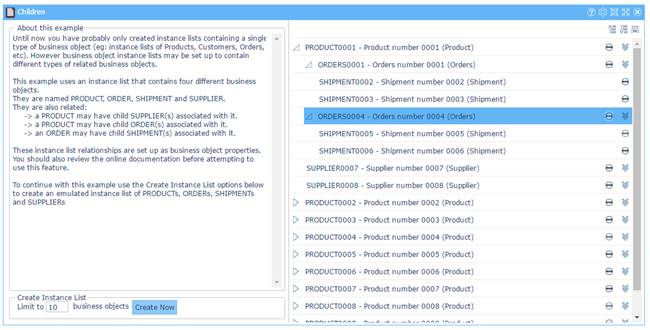

In VLF-ONE every instance list entry must have unique key of course.
However the relation ship between a parent and child list item is formed very simply.
This an example:
* Define a reference to temporarily hold the employee data item
Define_Com Class(#VF_LM003O) Name(#ParentEmployeeItem) Reference(*DYNAMIC)
* Add the parent employee list entry and get back the #VF_LM003O item reference
#avListManager.AddtoList Akey1(#Empno) Visualid1(#Empno)
Visualid2(#GiveName+ #SurName)
Dataitem(#ParentEmployeeItem)
* Now add skill children items to that employee ...
Repeat for each skill that employee #Empno has
* Add the skill instance list entry as a child of the employee just added
#avListManager.AddtoList Akey1(#Empno) Akey2(#SKILCODE)
Visualid1(#Skilcode) Visualid2(#SkilDesc)
ParentDataItem(#ParentEmployeeItem)
Endfor
Note carefully: When dealing with #VF_LM003O item references never keep them or your application will leak. If the reference is globally scoped in your code always set it to*NULL when you have finished using it.
For an example see shipped Examples -> Advanced -> Children:

Note that tree visualization in VLF-ONE is different to VLF-WIN.
If you want parents and children to be presented in another way, you can make a list of custom panels (like the shipped Person example) or build and snap in your own custom instance list browser.
To make parent-child relationships work:
|
1. |
A business object has to be defined for the parent and each child
|
For example, in the shipped VLF-ONE Children example the parent is PARENT_PRODUCT and the children are CHILD_ORDER and CHILD_SUPPLIER.
|
|
2. |
A relationship has to be defined between the parent and the children on the Instance Lists tab of the parent
|
For example, the shipped demo's PARENT_PRODUCT has these relationships defined:
|
|
3. |
When adding items to the instance list you need to specify their user object names and parent items.
|
When adding items to the instance list you need to specify:
|